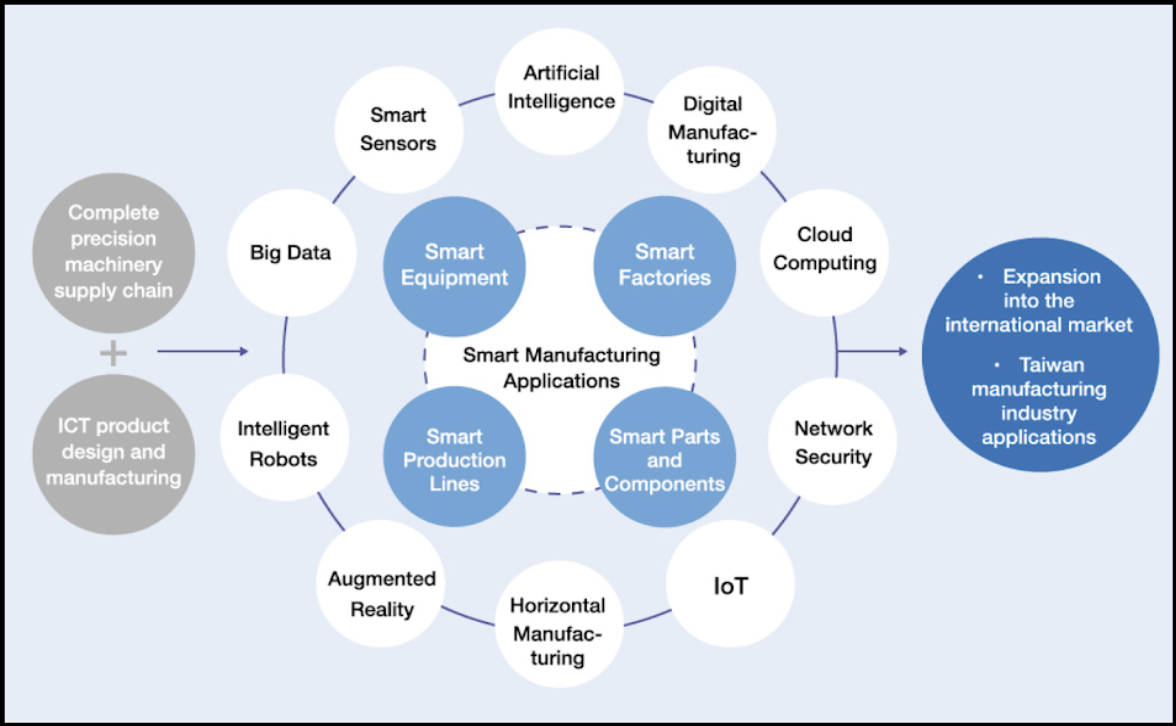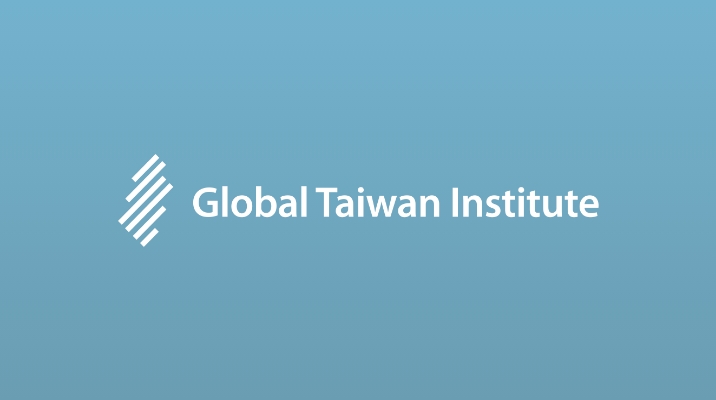Technology is a source of a nation’s power. In 2023, Global Finance ranked the Republic of China (Taiwan) third in the world in technological advancement, behind South Korea and the United States. Yet, Taiwan was not always at the leading edge of global technological development. According to Professor of Economics Peter C.Y. Chow at City University of New York, former President Tsai Ing-wen (蔡英文) came into office in 2016 in a period of economic slowdown for Taiwan, which had begun in the mid-1990s and accelerated during the 2008 global financial crisis. During that period, the rise of China had pushed Taiwan to the margins of international economic activity and excluded it from much of international economic deliberation. In this unfavorable global economic environment, the Tsai Administration sought to revitalize Taiwan’s economy through advanced technology.
In her first inaugural address on May 20, 2016, Tsai framed the promotion of national industries as part of Taiwan’s “New Model for Economic Development.” She stated: “We will prioritize our plans to promote five major innovative industries, with the goal of reshaping Taiwan’s global competitiveness.” These sectors—biomedicine, green energy technology, smart machinery, national defense, and the Asia Silicon Valley—are all high-tech industries. Tsai’s government later included two additional industries—the new agriculture and the circular economies—in the plan, which became the 5+2 Industrial Innovation Plan (5+2產業創新計畫). In Tsai’s second term, she introduced her second flagship plan, the Six Core Strategic Industries (六大戰略產業), which also incorporated burgeoning sectors such as cybersecurity. In executing these two initiatives, the Tsai Administration left an indelible mark on Taiwan’s thriving high-technology industries.
How are Taiwan’s Technology Policies Formed?
According to the National Science and Technology Council (NSTC, 國家科學及技術委員會), Taiwan’s technology policies are mainly formulated through four mechanisms: 1) the Executive Yuan’s (行政院) major policies and programs; 2) resolutions of the Executive Yuan’s Board of Science and Technology (BOST, 行政院國家科學技術發展委員會); 3) the “National Science and Technology Conference,” held every four years by the NSTC; and 4) the planning and implementation by all ministries and councils according to their functions as defined by law.
These mechanisms were codified under the Fundamental Science and Technology Act (科學技術基本法), enacted on January 20, 1999—which serves as the legal basis for technology policy formulation. According to Article 1 of the Act, the fundamental guidelines and principles for the government in promoting scientific and technological development are to 1) to raise the standards of science and technology, 2) maintain economic development, 3) strengthen ecological preservation, 4) improve public well-being, 5) boost national competitiveness, and 6) promote the sustainable development of human society. On the whole, the Act focused on developing talents in science and technology fields in tandem with humanities and social science—through assistance to public schools, institutes and enterprises, the formulation of the National Science and Technology Plan, and the development of scientific and technological personnel. One strength of the Act lay in its focus on ecological preservation. However, it had shortcomings when it came to the promotion of public-private partnerships, which also play a key role in technological development.
On September 8, 2016, the Tsai Administration approved the Asia Silicon Valley Development Plan (2016-2020) (亞洲·矽谷計畫) as a way to connect Taiwan with high-tech research and development (R&D) communities worldwide, including attracting and retaining bright talent to build a comprehensive innovative startup ecosystem. The plan called for the establishment of an innovative R&D center, as well as the promotion of connections with Silicon Valley and other innovation communities. Taiwan’s technology R&D spending as a ratio of gross domestic product (GDP) reached new records during the first term of the Tsai Administration, rising from 3.09 percent in 2016 to 3.63 percent in 2020. The private sectors contributed the most to this increase—providing 71.3 percent of total R&D spending in 2020. This statistic reveals the critical partnership between private business and the government in shaping Taiwan’s technology capacity.
The 5+2 Industrial Innovation Plan
Unlike current President Lai Ching-te (賴清德)’s the Five Trusted Industry Sectors Promotion Plan (五大信賴產業推動方案), which emphasizes an indispensable and trusted technological partner of democracies around the world, the 5+2 Industrial Innovation Plan, as the flagship program of the Tsai government, aimed to develop the human capacity of Taiwan’s innovation-related private sectors. The 5+2 Industrial Innovation Plan contains four major strategic components that were to: 1) foster interdisciplinary talent in the digital economy, 2) reinforce technical expert training mechanisms for industries, 3) diversify career paths to invigorate the cultivation of high-caliber scientific research professionals, and 4) recruit and retain international top talent. Put succinctly, the plan focused on revitalizing expert training mechanisms and enhancing individual talent, including talent from abroad. According to a 2017/2018 ManpowerGroup Talent Shortage Survey, the job vacancies in Taiwan that were the hardest to recruit for were sales representatives, followed by engineers and IT technicians. Therefore, with a growing pool of technology talent, Taiwan could better respond to the challenges of these talent shortages in Taiwanese industries.
Under the 5+2 Industrial Innovation Plan, the Executive Yuan also initiated the Smart Machinery Development Plan (智慧機械產業推動方案規劃) on July 21, 2016 to upgrade Taiwan’s machinery industry. The program utilizes the potential of Industry 4.0 technologies—cloud computing, big data, the Internet of Things (IoT), and smart robots. Under these circumstances, the BOST and the Ministry of Science and Technology (MOST, 科學技術部) set a goal for the National Science and Technology Development Plan (2017-2020) (國家科學技術發展計畫) to transition Taiwan towards an innovation economy. [1]
Taiwan’s Ministry of Economic Affairs (MOEA, 經濟部) elaborated on the Smart Machinery Development Plan in a 2017 white paper, titled Taiwan Key Innovative Industry—Smart Machinery. The paper outlined three areas through which to promote Taiwan’s innovative industries: 1) smart machinery technology, 2) cultivating talent for the smart machinery industry, and 3) the smart machinery industry promotion program. In the first area, core and application technologies of smart machinery would be developed in line with the promotion of Industry 4.0 technologies. In the second area, the Taiwanese government would earmark an estimated USD 70 million investment in the Central Taiwan Science Park and the Southern Taiwan Science Park, to build an intelligent self-manufacturing site, cultivate new enterprises, and train professional researchers. In the third area, the Executive Yuan would approve the establishment of a Smart Machinery Industry Promotion Office, a Smart Machinery Development Center at Shuinan Smart City in Taichung, and a Smart Machinery Industrial Park at Fengzhou in Taichung City to help build up an ecosystem for the smart machinery industry.

Image: A diagram depicting how Taiwan under the Tsai Administration planned to develop its smart machinery industry as part of the Smart Machinery Development Plan. (Image Source: Taiwan MOEA)
The Six Core Strategic Industries
During Tsai’s second term, the Executive Yuan introduced the Six Core Strategic Industries—an initiative founded on the 5+2 Industrial Innovation Plan. The initiative, introduced on December 10, 2020, targeted six industries: 1) digital technology, 2) cybersecurity, 3) medical technology and precision health, 4) green and renewable energy, 5) national defense and strategic industries, and 6) strategic stockpile industries. Although the Six Core Strategic Industries initiative was released in the wake of COVID-19 and against the backdrop of a massively escalating trade war between the United States and China, it aimed to primarily address the growing sophistication of cyber threats facing Taiwan and the shortage of skilled cybersecurity professionals in Taiwan. This interest in cybersecurity was not new—Tsai had first articulated the principle that cybersecurity is inseparable from national security in 2019. This was emphasized again in Tsai’s second inaugural speech of May 2020, when she stated: “We are going to develop a cybersecurity industry that can integrate with 5G, digital transformation, and our national security. We will strive to create cybersecurity systems and an industrial chain that can protect our country and earn the world’s trust.” Thus, unlike the 5+2 Industrial Innovation Plan, the subsequent Six Core Strategic Industries focused on enhancing Taiwan’s national security—particularly through cybersecurity—rather than merely boosting technology-driven economic growth.
However, Taiwan still faced challenges when it came to talent shortages. The National Science and Technology Development Plan (2021-2024) stated that: “Taiwan still has a shortage of cybersecurity talent and there is still plenty of room for improvement in terms of R&D capacity to cybersecurity.” To support the development of national cybersecurity solutions in line with the Six Core Strategic Industries, the Ministry of Digital Affairs (MODA, 數位發展部) organized the CYBERSEC conference in May 2023—which was later repeated in 2024 and 2025. In 2024, Tsai stated that CYBERSEC 2024 would “promote exchanges and inspire more cooperation among the academic, public and private sectors from home and abroad to strengthen the global cybersecurity network.” According to MODA, CYBERSEC is the largest cybersecurity exhibition in the Asia-Pacific region, with 48 cybersecurity companies showcasing their products and services at the 2023 conference. Overall, CYBERSEC was an effort by the Taiwanese government to facilitate regional cooperation and exchange on cybersecurity issues, while also attracting talent across the Asia-Pacific region to Taiwan’s cybersecurity industry.
A New Era of Technological Development
A 2023 statement by the National Development Council (NDC, 國家發展委員會) lauded the success of the 5+2 Industrial Innovation Plan, noting that the annual revenue of several of the industries—including the Internet of Things and biotechnology sectors—had surpassed NTD 1 trillion (USD 33 billion). This output underscores the success of Taiwan’s technological development initiatives.
The Tsai Administration’s two flagship plans, the 5+2 Industrial Innovation Plan (2016) and the Six Core Strategic Industries (2020), harnessed advanced technology as a national advantage in an effort to ward off economic slowdown. The plans sought to take Taiwan’s high-tech R&D global, support human capital, wield industry 4.0 technologies, establish smart machinery development centers, and promote cybersecurity. Capitalizing on private investment, the Tsai Administration launched a new era of advancement in Taiwan’s high technology sectors.
However, Taiwan’s labor shortages were not solved through these two flagship plans and Tsai’s new era of technological development was unsuccessful in growing new talent in the high-tech industries. Despite her efforts in advancing international top talent through the Asia Silicon Valley, the smart machinery industry, and CYBERSEC, the number of those talents who are interested in coming to Taiwan remains small. The economic slowdown will by no means be staved off unless there is a surge in the pool of technology talent. Accordingly, Lai’s Five Trusted Industry Sectors Promotion Plan should greatly prioritize labor shortages along with the value of democracy.
The main point: Former President Tsai Ing-wen came into office in a period of economic slowdown that had begun in the 1990s, leading her to reshape Taiwan’s national competitiveness using advanced technologies. Tsai outlined two significant plans: the 5+2 Industrial Innovation Plan and the Six Core Strategic Industries, which significantly emphasized human capital and the burgeoning cybersecurity sector. Still, future technology policies should continue to prioritize labor shortages to counter an economic slowdown.
[1] On July 27, 2022, the Ministry of Science and Technology was reorganized as a ministry-level council named the National Science and Technology Council.



